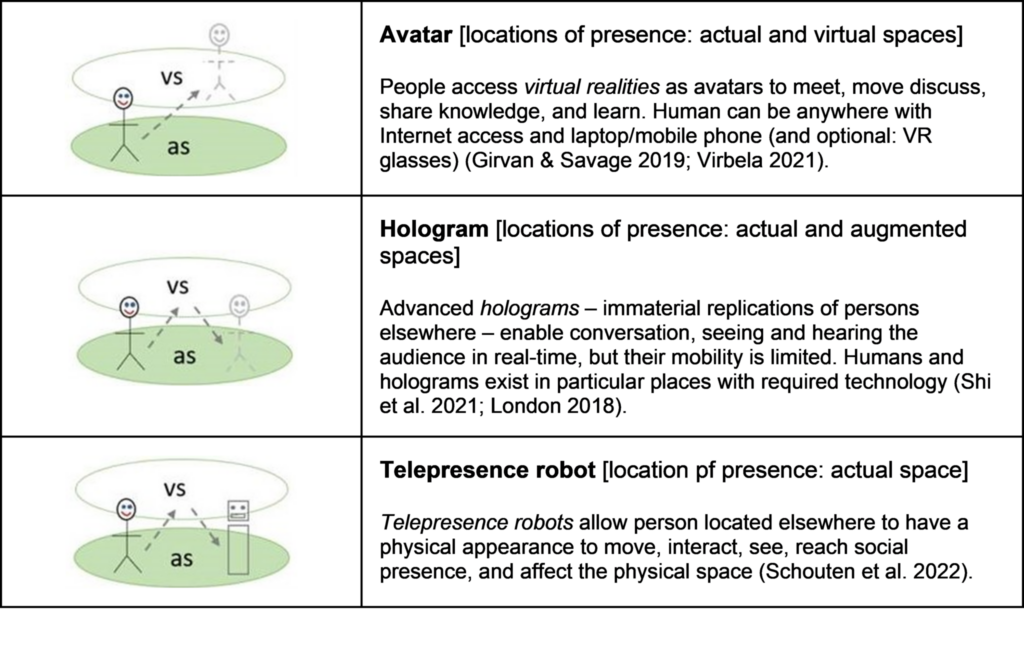BETH significantly increases the empirical and conceptual understanding of thoroughly novel geographies of knowledge creation processes from ideas to outcomes that are now emerging. With the availability of high-end technology, and as people adjust to life during the COVID-19 pandemic, we increasingly create knowledge as new beings, that is, humans as and through avatars, telepresence robots, and holograms. As new beings, we can be there in several places at a time, mobilize tacit and embodied knowledge in ways not possible before, and access and generate extended space and time into knowledge creation processes. Extended spaces that merge actual and virtual spaces and extended times to combine history-now-future into experienced moments hold important potential for creating innovative knowledge.
BETH has three aims. First, we bring new beings and emerging geographies of knowledge creation – mobilities, multiple locations, and extended spaces and times – into state-of-the-art social scientific research on knowledge creation. Second, we develop a novel spatio-temporal and posthuman approach to theoretically reconceptualize and empirically analyse geographies of knowledge creation as and through new beings. Third, in collaboration with the leading global scholars, BETH applies autoethnography to build as and through new beings an internationally recognized double-pole research community of Knowledge Creation Processes (KREPRO) in the Universities of Vaasa and Turku and supports prominent international Finland-based scholars in advancing their academic careers.
BETH asks how knowledge is created, located, and mobilized as and through new beings? BETH is a three-step empirical study that concentrates on the high-end global technology of the developers and use cases of avatars, holograms, and telepresence robots. First, we will conduct approximately 60 interviews with leading developers and users of avatars, telepresence robots, and holograms. Second, we choose the three most interesting cases of knowledge creation processes—one per each being—for an ethnographic study. We apply and further develop our mobility mapping method 2.0, combining GPS or virtual tracking, diaries, interviews, and video recorded events of knowledge sharing. Third, we apply autoethnography and actively use avatars, virtual reality, and a telepresence robot in our scientific work and university teaching. We analyse the materials with content analysis and multimodal analysis.
New beings and theres in extended spaces that merge actual
spaces (as) and virtual spaces (vs) together through knowledge creation process

- Funding: Academy of Finland
- Period: 2022–2026
- Budget: 479 877 euros
- Principal Investigator: Johanna Hautala
- Project Researcher: Marianne Mäntyoja
References
Girvan & Savage (2019) Virtual worlds: A new environment for constructionist learning. Computers in Human Behavior 99, pp. 396-414.
London Imperial College (2018) https://www.youtube.com/watch?v=ziIoUfzsk_Q
Schouten A, Portegies T, Withuis I, Willemsen L, Mazerant-Dubois K (2022) Robomorphism: Examining the eects of telepresence robots on between-student cooperation. Computers in Human Behavior, 126, 106980.
Shi L, Li B, Kim C, Kellnhofer P, Matusik W (2021) Towards real-time photorealistic 3D holography with deep neural networks. Nature, 591(7849), 234-239.
Virbela (2021) A virtual world for work. https://www.virbela.com/